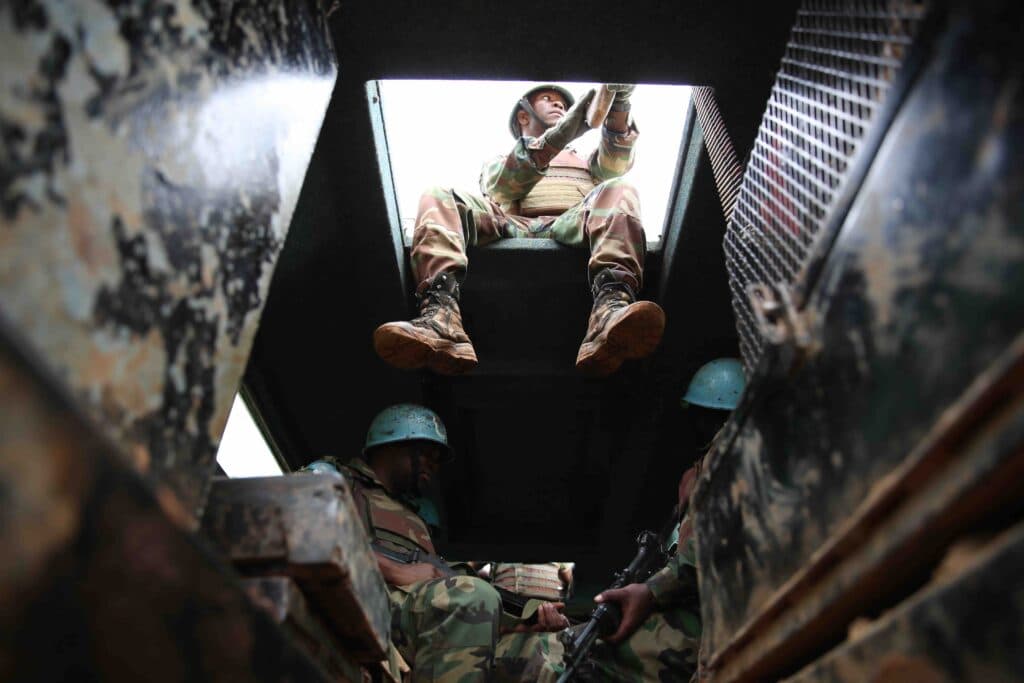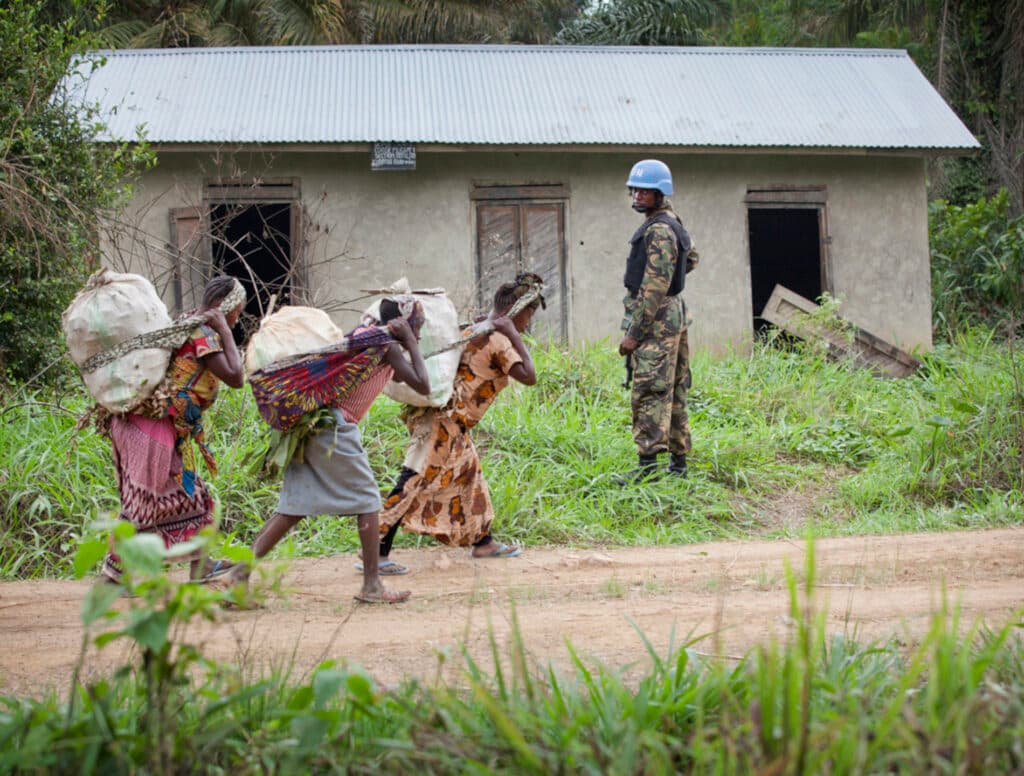
Cultural heritage and IHL
The protection of cultural heritage and cultural property during armed conflict
During armed conflict, warring parties often destroy or take valuable items of cultural heritage of their enemy. International humanitarian law (IHL) sets out a framework of special protection for such items during armed conflict, as well as measures that should be taken in peacetime.
In situations of armed conflict, cultural property is often vulnerable to attack. The looting of the Baghdad Museum in 2003 and the Dubrovnik attacks in 1991 are just two examples of attacks on cultural property during armed conflict.
To prevent the destruction of cultural and historic goods, international humanitarian law (IHL) affords cultural heritage, and specifically property, specific protections.
Culture and People
Article 27 of the Fourth Geneva Convention states that:
Protected persons are entitled, in all circumstances, to respect for their persons, their honor, their family rights, their religious convictions and practices, and their manners and customs.
While the term culture is not specifically referred to, the obligation to respect manners and customs can be seen as a basis for the protection of cultural heritage and property.
Cultural property and IHL
Cultural property is afforded all the general protection that civilian property enjoys under IHL, in particular in situations of occupation and hostilities.
In addition, cultural property is provided additional protections during armed conflict. This extra protection is based on the notion that certain property represents cultural heritage of humankind and hence this value must be protected.
Under Article 27 of the Hague Regulations of 1907, during hostilities 'all necessary steps should be taken to spare, as far as possible, buildings dedicated to religion, art, science, or charitable purposes, historic monuments, hospitals, and place where the sick and wounded are collected’ as long as such are not used for military purposes.
The Geneva Conventions provides cultural property the same protections afforded to all civilian property, even though it is not specifically addressed in the Convention. This possible gap or lack of focus on cultural property was addressed through the adoption of the 1954 Hague Convention which deals specifically with cultural property.
Relevant treaties on for the protection of cultural heritage in armed conflict
The 1954 Convention on the Protection of Cultural Property during Armed Conflict sets out clear obligations for the state who owns the cultural property to protect such, and for the parties to an armed conflict to refrain from directly targeting cultural property and avoid causing incidental damage.
Definition of Cultural Property: 1954 Convention
Article 1. For the purposes of the present Convention, the term "cultural property" shall cover, irrespective of origin or ownership:
(a) movable or immovable property of great importance to the cultural heritage of every people, such as monuments of architecture, art or history, whether religious or secular; archaeological sites; groups of buildings which, as a whole, are of historical or artistic interest; works of art; manuscripts, books and other objects of artistic, historical or archaeological interest; as well as scientific collections and important collections of books or archives or of reproductions of the property defined above;
(b) buildings whose main and effective purpose is to preserve or exhibit the movable cultural property defined in sub-paragraph (a) such as museums, large libraries and depositories of archives, and refuges intended to shelter, in the event of armed conflict, the movable cultural property defined in sub-paragraph (a);
(c) centres containing a large amount of cultural property as defined in sub-paragraphs (a) and (b), to be known as "centres containing monuments.
The Second Additional Protocol to the Hague Convention provides more guidance on how and when protection could be lost. It also includes details on peacetime measures such as emergency measures for protection against fires or structural collapse, and the designation and training of competent authorities to safeguard cultural property. The Second Additional Protocol importantly applies to both international and non-international armed conflict.
The protections afforded to cultural property are quite complex: the 1954 Convention includes two levels of protection – general and special. The Second Additional Protocol of 1999 develops and changes the protections and adds a third category of ‘enhanced’ protection. Hence the criteria for both when such property can be used for military purposes and also when it can be attacked dependent upon whether the general or special protection regime is applicable, and which treaty applies.
‘Special’ protection
Article 8 of the 1954 Hague Convention provides for an elevated level of protection for a limited number of refugees intended to shelter movable cultural property. Such shelters need to be registered under the UNESCO International Register of Cultural Property under Special Protection. Warring parties are obligated under Article 9 to refrain from subjecting such property to any act of hostility or using it for purposes which are likely to expose it to destruction or damage during an armed conflict.
‘Enhanced’ protection
Due to the limitations of the 1954 ‘special’ protection system of cultural property, the Second Protocol of 1999 established a new regime. Cultural property of the greatest importance for humanity can be placed under enhanced protection, provided it is adequately protected by domestic law and not used for military purposes or to shield military sites. Enhanced protection is granted from the moment of entry in the List of Cultural Property Under Enhanced Protection.
Cultural property and Occupied Territory:
Like many other issues addressed under IHL, under situations of Occupation there are additional protections.
A key provision in customary international law is that:
The occupying power must prevent the illicit export of cultural property from occupied territory and must return illicitly exported property to the competent authorities of the occupied territory. (Rule 41, ICRC Customary International Law Study)
Additional Protocols to the Geneva Conventions
Cultural property is provided the same protections as all civilian property under the Additional Protocols to the Geneva Conventions and customary international law. In addition, Article 53 of Additional Protocol One states that:
Without prejudice to the provisions of the Hague Convention for the Protection of Cultural Property in the Event of Armed Conflict of 14 May 1954, and of other relevant international instruments, it is prohibited:
(a) to commit any acts of hostility directed against the historic monuments, works of art or places of worship which constitute the cultural or spiritual heritage of peoples;
(b) to use such objects in support of the military effort;
(c) to make such objects the object of reprisals.
Individual criminal responsibility
Direct attacks against civilian property are grave breaches of the Geneva Convention and war crimes under the Rome Statute of the International Criminal Court.
In addition, Article 15 of Additional Protocol Two defines five acts which constitute serious violations that require a criminal sanction if committed intentionally and in violation of the 1954 Convention or Protocol Two:
- making cultural property under enhanced protection the object of attack,
- using cultural property under enhanced protection or its immediate surroundings in support of military action,
- extensive destruction or appropriation of cultural property protected under the Convention and [the Second] Protocol,
- making cultural property protected under the Convention and [the Second ] Protocol the object of attack,
- theft, pillage or misappropriation of, or acts of vandalism directed against, cultural property protected under the Convention.
Cultural property and international human rights law
There is significant overlap between human rights and IHL when it comes to the protection of cultural heritage.
Provisions relating to family life and privacy; right to education; freedom of expression, thought conscience and religion all play a role in protecting cultural heritage. These rights are set out in the International Covenant on Civil and Political Rights and The International Covenant Economic, Social and Cultural Rights (CESCR).



